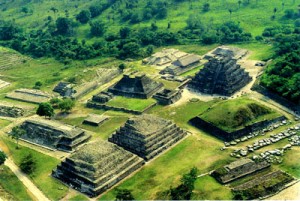 Located in the state of Veracruz, El Tajín is one of many important archaeological sites in Mexico. Most of this site is still unexcavated. The site is full of many fascinating and mysterious ruins. His boom was the beginning of the ninth century until the early thirteenth century; the cultural influence of Tajín went through the Gulf of Mexico and came to central Mexico. El Tajín has survived as an example of the greatness and importance of the pre-Hispanic cultures of Mexico
Located in the state of Veracruz, El Tajín is one of many important archaeological sites in Mexico. Most of this site is still unexcavated. The site is full of many fascinating and mysterious ruins. His boom was the beginning of the ninth century until the early thirteenth century; the cultural influence of Tajín went through the Gulf of Mexico and came to central Mexico. El Tajín has survived as an example of the greatness and importance of the pre-Hispanic cultures of Mexico
This pre-Hispanic city and designated by UNESCO in its declaration of World Heritage, 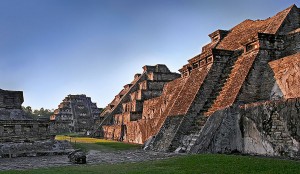 is a place marked by the nature of the people who live there. A place that mixes nature, beauty and culture, thus giving way to a universal landscape. Tajín means city or place of thunder in the language Totonaca.
is a place marked by the nature of the people who live there. A place that mixes nature, beauty and culture, thus giving way to a universal landscape. Tajín means city or place of thunder in the language Totonaca.
The city of Tajín was the state capital of Totonaca Mesoamerican city and was the largest of the Gulf of Mexico, since it controlled the trade, political and religious leaders in the region.
The construction of ceremonial buildings in Tajín probably started in the first Century. Its reconstruction started in the thirteenth century, and finally was totally depopulated when the Spanish conquerors arrived in the sixteenth century.
The first archaeological dig was made by Jose Garcia Payón from 1943 to 1963. 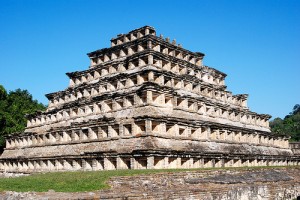 The Mexican Institute of Anthropology and History made a restoration of the site in 1980. This archaeological site is about 1 square km, but it is speculated that there is still a large part of this site that has not been found.
The Mexican Institute of Anthropology and History made a restoration of the site in 1980. This archaeological site is about 1 square km, but it is speculated that there is still a large part of this site that has not been found.
This site has several pyramids, palaces and a number of ball game fields. The most famous pyramid of this site is called the Piramide de los Nichos (Pyramid of the Niches). This pyramid has 365 niches, according to archaeologists, they represent days of the year, being a calendar.
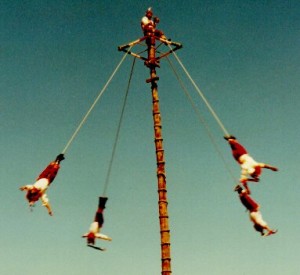 The famous Dance of the fliers came from this area, and is common to visit this place to see how it carries out this ritual, which is related to solar worship, and soil fertility. On a small structure on top of a pole (huge tree trunk of the jungle), is the leader of the dance, who plays their instruments towards the four cardinal points, four dancers fly down with ropes, turning upside down, and after thirteen times encircle the pole, reach the ground, recalling that produces heat and the sun caressing the earth.
The famous Dance of the fliers came from this area, and is common to visit this place to see how it carries out this ritual, which is related to solar worship, and soil fertility. On a small structure on top of a pole (huge tree trunk of the jungle), is the leader of the dance, who plays their instruments towards the four cardinal points, four dancers fly down with ropes, turning upside down, and after thirteen times encircle the pole, reach the ground, recalling that produces heat and the sun caressing the earth.
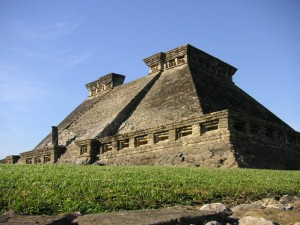 Go to El Tajín also means traveling to a land of jungle, damp and melancholy of many coastal rivers. Therefore, the state represents a unique place to practice water sports like rafting, fishing and canoeing.
Go to El Tajín also means traveling to a land of jungle, damp and melancholy of many coastal rivers. Therefore, the state represents a unique place to practice water sports like rafting, fishing and canoeing.

